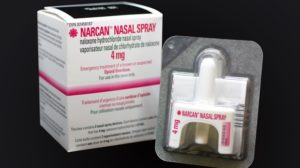
Contributor: Mark S. Gold, M.D., Professor, Washington University School of Medicine - Department of Psychiatry
Introduction
Opioid use disorder (OUD) is a chronic, relapsing, and acquired disease. Opioid use stimulates it's own taking until loss of control and continued use cause numerous consequences. OUD is often associated with loss of life, employment, relationships, and health. We are in an opioid overdose, opioid use, and opioid dependence epidemic.
While we often focus on reducing overdose and reversing those overdoses that occur, many overdoses are patients with OUDs who are not in treatment. Medication for Addiction Treatment (MAT) and opioid use disorder treatment programs are essential parts of our response to overdose initiatives [1].
Deaths from overdose are increasing during the covid19 crisis as EMTs, Emergency Rooms, and General Hospitals are inundated with COVID cases, and people with OUDs are staying away. 47,600 people died from drug overdoses involving opioids in 2017.
Between 2012 and 2018, the number of fentanyl-induced fatal overdoses rose dramatically, accounting for a majority of overdose deaths. We have moved from a prescription opioid to heroin and now are in a fentanyl crisis. Centers for Disease Control data show that fentanyl is still the primary cause of fatal overdoses.
Patients who think that they bought heroin are surprised to learn that it was all or partially fentanyl. While treatments have improved, many patients treated in medications for addiction treatment (MAT) programs or health providers' offices with MAT often relapse.
The first sign of a slip or relapse may be a change in schedule, missed clinic appointments, missed group, or individual counseling. But, today, without actual visits, patients may just slip and overdose. Some patients cease their MAT course, and others drop out of treatment altogether.
We are improving access to treatment and OUD treatment options and outcomes. But, we do lack, for example, prospective, long-term, oncology-like, 5-year studies on the subject.
The prestigious American Society of Addiction Medicine (ASAM) has recently updated its guidelines for the treatment of OUDs [2]. The use of MATs has been studied for years, and they do a very good job at bringing the practice of Addiction Medicine up to date with this publication ( The ASAM National Practice Guideline for the Treatment of Opioid Use Disorder: 2020 Focused Update. J Addict Med. 2020;14(2S Suppl 1):1-91. doi:10.1097/ADM.0000000000000633 ).
We know the use of MATs lower the risk of fatal overdoses by approximately 50% [3]. Right places to start MATs are anywhere we find a patient looking for treatment, whether in the emergency department or the physician's office.
The guidelines help everyone understand that location of treatment is less relevant than starting treatment in a licensed program or clinician primary care or another prescriber. More primary care physicians need to become "waivered" to prescribe this medication, which requires some training and an exclusive license.
Opioid Use Disorders and Buprenorphine
Luckily we have more than one MAT option for patients with OUDs. When I was in training at Yale, we had methadone (a full opioid agonist) [4]. Since the 1970s, we have added to the list of safe and effective MATs for OUD:
- Buprenorphine (a partial agonist)
- Buprenorphine plus Naloxone (Suboxone)
- Naltrexone (an opioid antagonist)
 We will focus in this article on Buprenorphine. Buprenorphine is a partial agonist at an opioid receptor that neuroscientists call the mu-opioid receptor. What makes it unique is that it has a very high affinity for this mu receptor, making it an opioid blocker by competing and displacing heroin or fentanyl or other full opioid agonists.
We will focus in this article on Buprenorphine. Buprenorphine is a partial agonist at an opioid receptor that neuroscientists call the mu-opioid receptor. What makes it unique is that it has a very high affinity for this mu receptor, making it an opioid blocker by competing and displacing heroin or fentanyl or other full opioid agonists.
This high affinity means that Buprenorphine is difficult (but not impossible) to dislodge from the mu-opioid receptor. This tight binding or high affinity helps to explain its ability to block the subjective and physiological effects of heroin or other opioids.
Its high affinity is also the primary reason that Buprenorphine can precipitate withdrawal when given to individuals physically dependent on opioids. This blockade of the mu-opioid receptor by Buprenorphine is not absolute and with difficulty can be overcome by higher doses of heroin or with more potent mu opioids, like fentanyl.
On the one hand, the goal of clinical treatment is to engage the patient with OUD and start a MAT as soon as possible. On the other hand, giving a dose can cause opioid withdrawal. So, we usually wait to administer Buprenorphine until signs of opioid withdrawal emerge.
In this way, it is like giving clonidine for detoxification. Thus, the most common way we start buprenorphine induction is to wait and follow the signs, symptoms, and ratings for opioid withdrawal.
Buprenorphine at dose >8 mg/day has been reported to suppress opioid withdrawal for 24 hours in opioid-dependent subjects. However, to contain the use of illicit opioids during treatment, higher doses of Buprenorphine are more effective.
Buprenorphine doses >16 mg/day were more effective than doses <16 mg at retaining subjects in treatment. Buprenorphine binds to opioid receptors, producing prompt blockade of other opioids. B
uprenorphine has what we call low intrinsic activity resulting in less euphoria and lower diversion potential than other mu agonists. Buprenorphine is a partial agonist and simply cannot produce a 100% response like a full agonist (i.e., fentanyl) can.
Buprenorphine still has intrinsic reinforcing effects as a partial agonist and can be misused and diverted. Accidental use of Buprenorphine can result in an overdose or death among children and young adults who take it by accident.
Buprenorphine has a street value and is bartered and sold. So, the intentional diversion of Buprenorphine is not uncommon. Sometimes it is taken to self-treat opioid withdrawal symptoms, but, clearly, other times, it is taken for recreational use.
Injected Buprenorphine became the primary drug of abuse [5] in France. Suboxone, a combination of Buprenorphine and Naloxone, decreases diversion and intravenous use. The rationale is that Naloxone taken orally or sublingually has only low bioavailability.
In contrast, if the medication is crushed up and then injected, Naloxone attenuates the opioid agonist effect and precipitates withdrawal in people dependent on opioids. The effectiveness of the combination buprenorphine-naloxone combination in deterring intravenous misuse is debated.
But, it appears that adding Naloxone reduces but does not abolish, intravenous abuse. Pain management providers prescribe Buprenorphine without Naloxone and also, can be given for OUDs but only in sublingual film or tablet form. Except in pregnancy or very severe liver impairment, prescription of isolated Buprenorphine is discouraged, given the potential for intravenous abuse.
Suboxone
Suboxone is the trade name for Buprenorphine combined with Naloxone, an opioid antagonist. It is one of the primary drugs used for medication-assisted therapy (MAT) for OUDs and the most commonly prescribed.
 Subutex was the first version of Buprenorphine to be prescribed as a MAT for opioid dependence. Suboxone is a combination of buprenorphine/naloxone in a sublingual film preparation. Suboxone is available in many different forms, including sublingual tablets (generic) or film which dissolves under the tongue.
Subutex was the first version of Buprenorphine to be prescribed as a MAT for opioid dependence. Suboxone is a combination of buprenorphine/naloxone in a sublingual film preparation. Suboxone is available in many different forms, including sublingual tablets (generic) or film which dissolves under the tongue.
There are generic alternatives as well as various brand names, including Zubsolv (buprenorphine and naloxone) sublingual tablets and Bunavail film (buprenorphine and naloxone) buccal film. This Buprenorphine formulation has the highest potential for diversion of all formulations [6].
Suboxone works by tightly binding to the same receptors in the brain as heroin, morphine, and oxycodone. In one way, it is providing a replacement. Still, it also blunts intoxication with these other opioid drugs, prevents opioid cravings, and it allows many people the time to get additional treatment and make changes to a life of relative normalcy and safety.
Return to premorbid or pre-OUD function is possible. A key goal of Addiction Medicine experts is to work to make Suboxone much more widely available. Suboxone is an opiate medication and, of course, can be abused.
It is not commonly abused and not like heroin or oxycodone or fentanyl. That is because it is only a "partial" agonist of the mu or primary euphoria or opioid receptor. It is difficult to overdose on Suboxone alone.
Compared to other opioids, Suboxone is much less likely to slow breathing. When people do overdose on Suboxone, it is due to polydrug use-- mixing Suboxone with alcohol or sleeping pills or anxiolytic sedatives such as benzodiazepines, medicines.
FDA-approved buprenorphine products approved for the treatment of opioid dependence include [7]:
- Bunavail (Buprenorphine and Naloxone) buccal film
- Cassipa (Buprenorphine and Naloxone) sublingual film
- Probuphine (Buprenorphine) implant for subdermal administration
- Sublocade (Buprenorphine extended‐release) injection for subcutaneous use
- Suboxone (Buprenorphine and Naloxone) sublingual film for sublingual or buccal use, or sublingual tablet.
- Subutex (Buprenorphine) sublingual tablet
- Zubsolv (Buprenorphine and Naloxone) sublingual tablets
- ASAM recommends Buprenorphine for patients with OUD-opioid use disorder, who are able to give informed consent and have no specific contraindication for this treatment [8].
Opioid Use Disorders- Buprenorphine, Suboxone, and New Buprenorphine Formulations
While experts recognize that alcoholics anonymous and other primarily psychosocial treatments are treatments of choice for alcohol use disorders, OUDs treatment outcomes and priorities are different. Psychosocial interventions, so essential to alcohol use disorder treatment, do not address the early goals of craving reduction, withdrawal reversal, and overdose protection. Patients with OUD are thinking about withdrawal distress and getting opioids. In most cases, it is MAT first and second.
When overdose reversal or an emergency room crisis brings an OUD patient an opportunity for treatment, we try to initiate it there on the spot. Efficacy of MATs in this OUD treatments, and thus making evidence-based OUD treatments more accessible is urgent.
Psychosocial interventions alone are difficult to manage for both the OUD patient and physician. When a MAT is added to these interventions, opioid use and relapses are decreased.
Compared with psychosocial intervention alone or placebo, researchers have shown that MATs reduce opioid use, overdose, morbidity, and mortality. Adherence to OUD medications reduces relapse and overdose risk.
Going to the treatment program, counseling and group, having urine drug tests, and taking MAT medications are core components of effective OUD treatment. It starts with and can be as simple as following the post-evaluation treatment plan.
Buprenorphine and Buprenorphine + Naloxone works and is also safe as a first-line MAT. Rarely, do we hear of someone who is taking their Buprenorphine as prescribed, dying of an opioid overdose. Buprenorphine overdose is rare.
 However, considerable diversion of oral and transmucosal opioid maintenance medications has been documented. Delivery systems that reduce risks of nonadherence through diversion or altered self-administration may increase Buprenorphine's effectiveness for clinical stabilization via increased treatment exposure.
However, considerable diversion of oral and transmucosal opioid maintenance medications has been documented. Delivery systems that reduce risks of nonadherence through diversion or altered self-administration may increase Buprenorphine's effectiveness for clinical stabilization via increased treatment exposure.
Some alternatives to treatment, for OUD patients, can be hazardous. Discontinuation of MAT, dropping out of a treatment program, or detoxification from opioids carries a significant risk of relapse. MATretention in OUD treatment with FDA-approved medications, such as methadone or Buprenorphine, reduces both all-cause and overdose mortality, and patients who are adherent to medications for OUD use cumulatively fewer illicit opioids.
Therefore, medication adherence is a critical factor in buprenorphine treatment outcomes. However, prescribed sublingual or buccal doses are under the patient's control, and the decision for dosing each day is subject to changes in motivation, mood, and stress or changes in medication access, in the case either of theft or of being distant from the place where one's medications are stored.
Buprenorphine, Approved for clinical use in 2002 by the Food and Drug Administration (FDA), in combination with counseling and behavioral therapies, is safe and effective, especially when given as part of a whole-patient approach to the treatment of OUD. When taken as prescribed, the FDA has concluded that Buprenorphine is safe and effective.
Unlike a methadone treatment program, licensed for methadone and located in a specific clinic, Buprenorphine can be prescribed in physician offices, significantly increasing treatment access. Buprenorphine can be given after overdose reversal and in the Hospital Emergency Department.
In general, we recommend waiting two hours after a naloxone reversal to ask the patient to answer the questions on the Clinical Opioid Withdrawal Scale (COWS). The COWS score allows you to pick a dose, treat, and follow according to withdrawal severity.
Remember, too, that it makes sense to always ask about and test for methadone. If the individual has methadone in their system, waiting longer before giving Suboxone is logical. Treatment of withdrawal with Suboxone should be followed over time with the COWS, and marked improvement in withdrawal symptoms should occur within 20 to 30 minutes of buprenorphine dose administration.
The E.D. should be critical to the successful treatment of OUDs. E.D. experts are bundling assessment of opioid use disorder (OUD), administering Buprenorphine, counseling regarding overdose, naloxone distribution, providing buprenorphine treatment, and providing an OTP referral for patients with OUDs.
Please see – Buprenorphine, Suboxone and the Treatment of Opioid Use Disorder (OUD) in 2020 – Part 2
References:
1. https://doi.org/10.1016/j.biopsych.2019.06.020
2. The ASAM National Practice Guideline for the Treatment of Opioid Use Disorder: 2020 Focused Update. J Addict Med. 2020;14(2S Suppl 1):1-91. doi:10.1097/ADM.0000000000000633
3. https://doi.org/10.1016/j.biopsych.2019.06.020
4. Kleber HD. Methadone maintenance 4 decades later: thousands of lives saved but still controversial. JAMA. 2008;300(19):2303-2305. doi:10.1001/jama.2008.648
5. Cleaver H. Georgian drug misusers switch to Western heroin substitute. BMJ. 2007; 334: 821
6. https://www.samhsa.gov/medication-assisted-treatment/treatment/buprenorphine
7. https://www.fda.gov/drugs/information-drug-class/information-about-medication-assisted-treatment-mat
8. The ASAM National Practice Guideline for the Treatment of Opioid Use Disorder: 2020 Focused Update. J Addict Med. 2020;14(2S Suppl 1):1-91. doi:10.1097/ADM.0000000000000633
About the Author:
 Mark S. Gold, M.D., Professor, Washington University School of Medicine - Department of Psychiatry, served as Professor, the Donald Dizney Eminent Scholar, Distinguished Professor and Chair of Psychiatry from 1990-2014.
Mark S. Gold, M.D., Professor, Washington University School of Medicine - Department of Psychiatry, served as Professor, the Donald Dizney Eminent Scholar, Distinguished Professor and Chair of Psychiatry from 1990-2014.
Dr. Gold was the first Faculty from the College of Medicine to be selected as a University-wide Distinguished Alumni Professor and served as the 17th University of Florida’s Distinguished Alumni Professor.
Learn more about Mark S. Gold, MD
The opinions and views of our guest contributors are shared to provide a broad perspective of addictions. These are not necessarily the views of Addiction Hope, but an effort to offer a discussion of various issues by different concerned individuals.
We at Addiction Hope understand that addictions result from multiple physical, emotional, environmental and genetic factors. If you or a loved one are suffering from an addiction, please know that there is hope for you, and seek immediate professional help.
Published on July 23, 2020
Reviewed by Jacquelyn Ekern, MS, LPC on July 23, 2020
Published on AddictionHope.com
